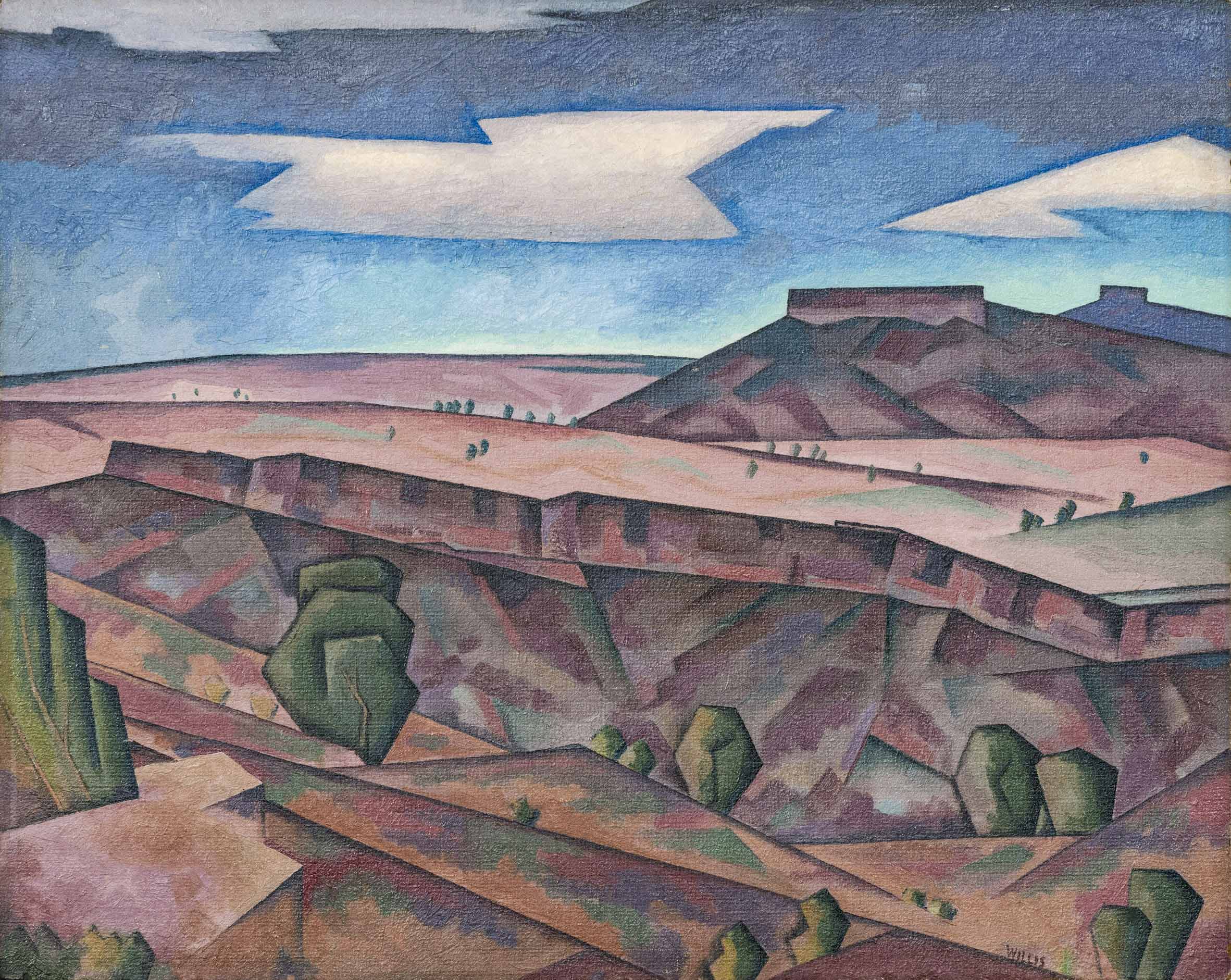In the 1930s and 1940s, painter Brooks Willis developed a reputation as an “extreme modernist.”1 The clean lines, hard edges, and sharp angles of Desert certainly live up to this reputation. Yet the soft glow of twilight on the horizon and gradation of light to dark blue in the sky softens the painting’s strict geometry and gives it a more naturalistic ambiance.
Comparing Desert to Willis’s painting Cottonwoods, made in the same year, reveals how the artist experimented with ideas of modernism. However abstract Desert is in its geometrical composition, it retains much of traditional European painting’s emphasis on depth and perspective. Cottonwoods, however, with its visible brushstrokes and high level of attention paid to the act of applying paint to canvas, rather than to developing an illusion of depth, might actually post a greater challenge to tradition.


